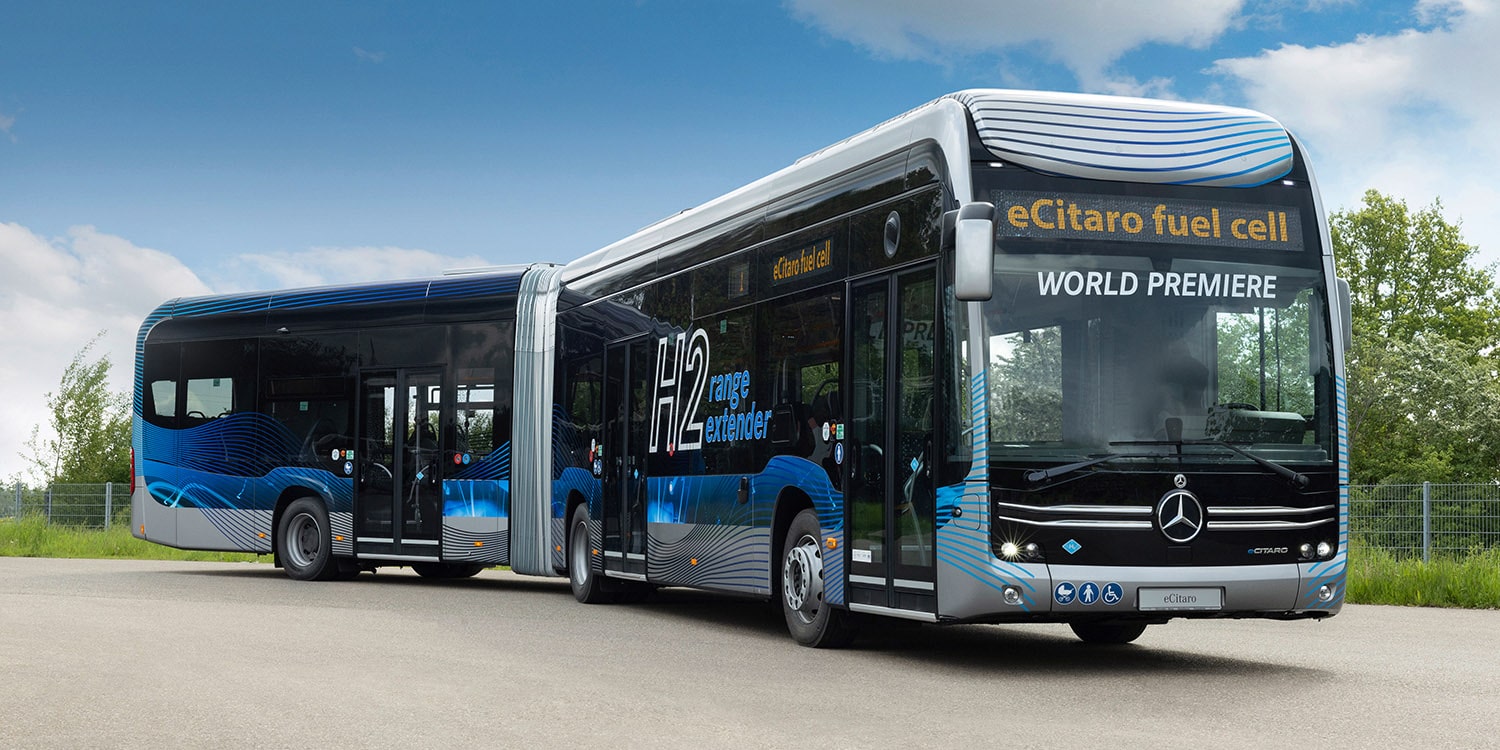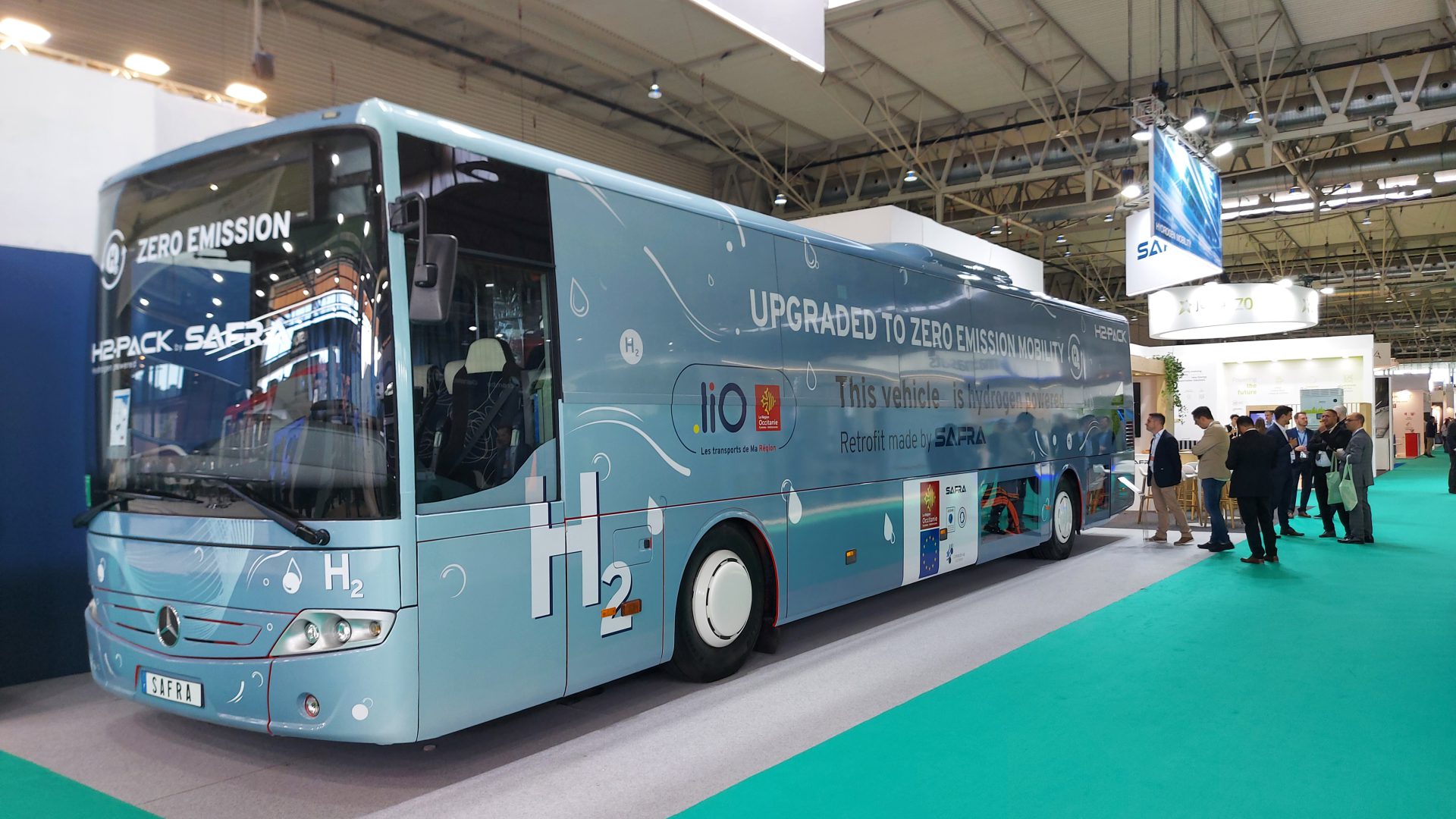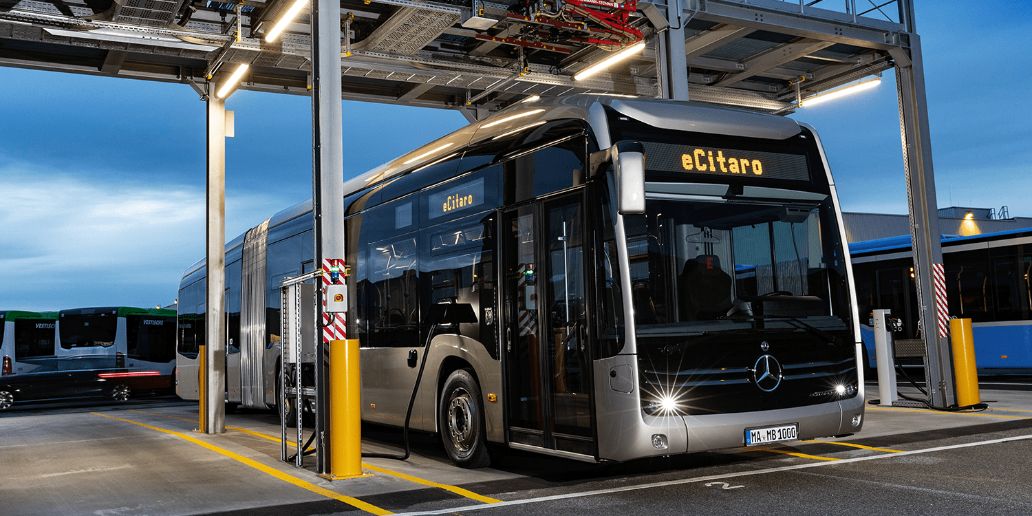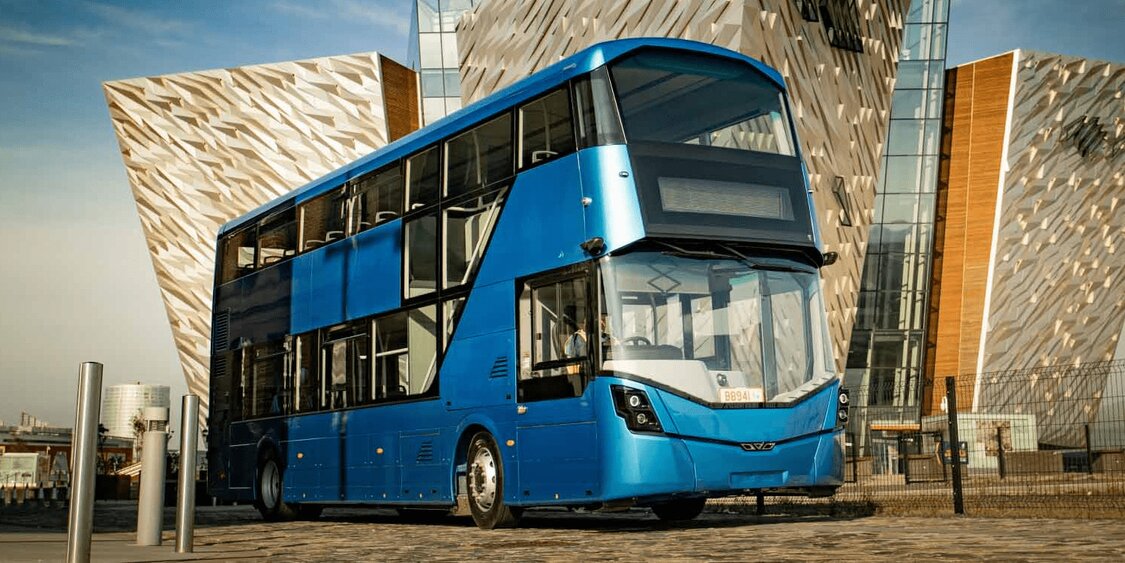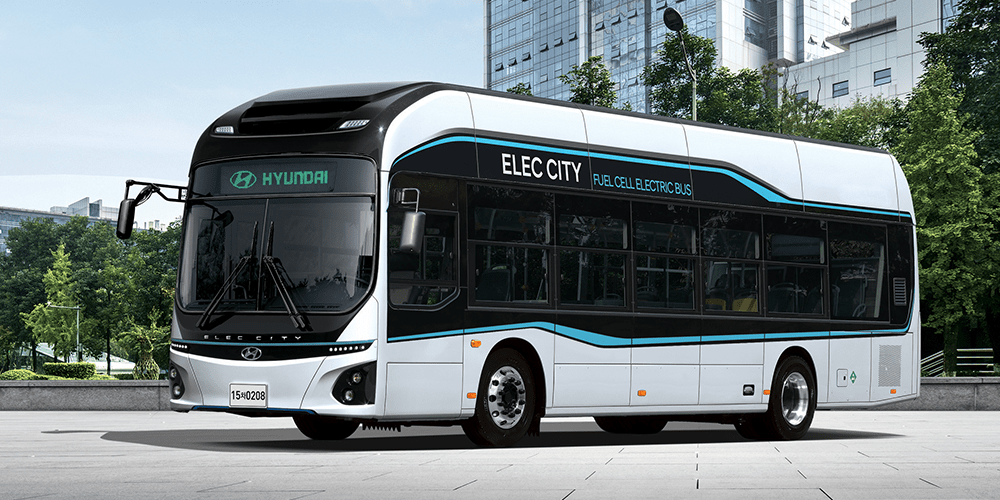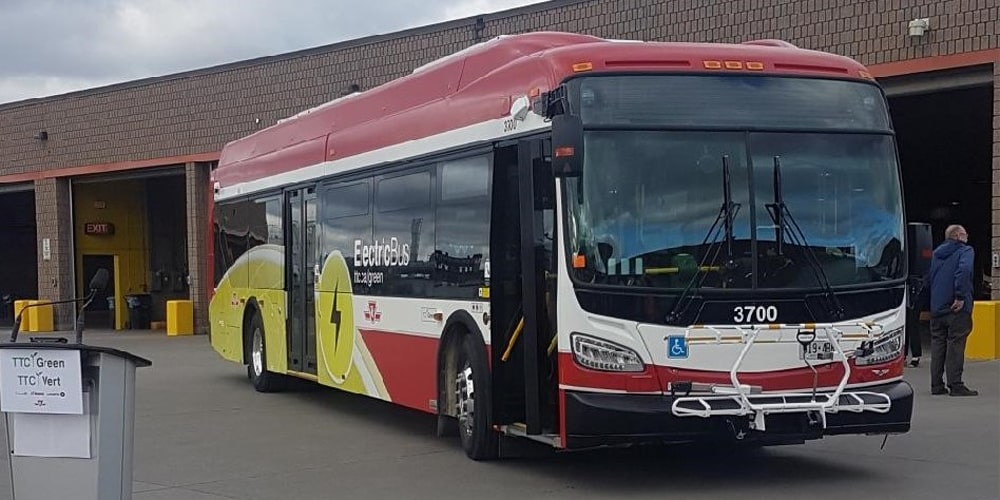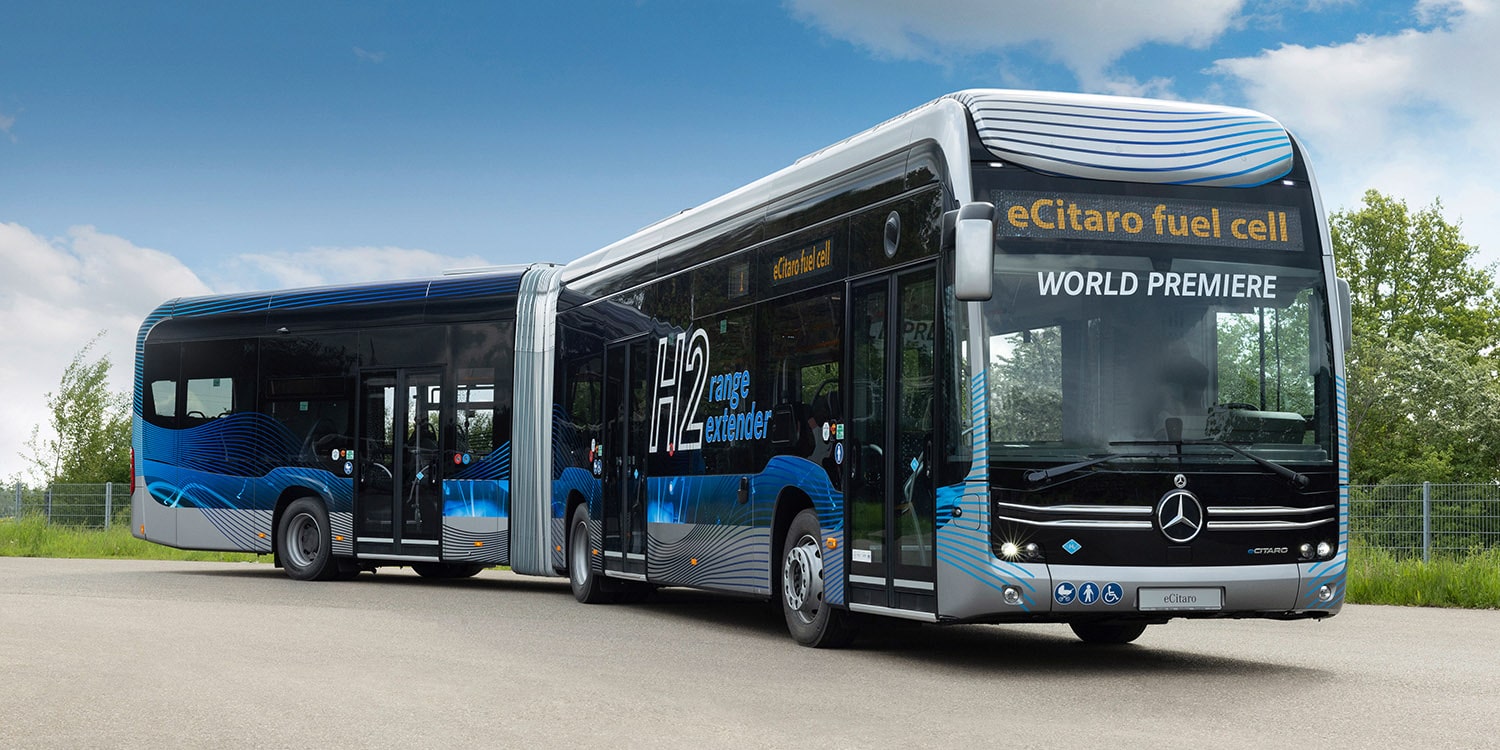Daimler Buses has introduced its groundbreaking eCitaro fuel cell bus, featuring a fuel cell as a range extender, at the prestigious Global Public Transport Summit. The launch of the eCitaro fuel cell coincides with the start of series production, marking a significant milestone for the company.
In late May, Daimler Buses provided initial details about the new eCitaro variant, revealing that it combines Mercedes-Benz’s cutting-edge third-generation lithium-ion batteries with a fuel cell to extend its range. The solo bus model is equipped with three battery packs boasting a combined capacity of 294 kWh, while the articulated bus version can accommodate three or four packs with a cumulative capacity of up to 392 kWh. The fuel cell, with an output of 60 kW, is supplied by Toyota.
Daimler Buses claims that the articulated range-extender bus can travel up to 350 kilometers, while the solo bus has a range of up to 400 kilometers. As a result of these impressive ranges, the eCitaro fuel cell is not intended for intermediate charging during the route but rather relies on pure depot charging via a plug, capable of delivering up to 150 kW. This feature makes it an ideal addition for transport companies with existing battery-electric fleets that aim to operate long routes without the need for frequent recharging or additional buses. However, it’s worth noting that a hydrogen source is required to utilize the range extender technology.
Regarding the commencement of series production, Daimler Buses has announced that the articulated bus version is available for order starting from the trade fair premiere. However, the company has not disclosed specific details about the market debut or pricing of the solo bus.
Daimler Buses also highlights the design aspects of the new eCitaro variant. The manufacturer consciously opted for a drive system that features a large battery capacity and a compact fuel cell, offering a range of possible combinations. They emphasize that grid electricity, serving as a fuel source, will be considerably more cost-effective than hydrogen in the foreseeable future. As a result, the fuel cell in the eCitaro fuel cell is employed solely to extend the range and does not function as the primary energy source.
The fuel cell used in the eCitaro fuel cell is a tried-and-tested module, specifically a second-generation Toyota fuel cell designed for heavy-duty applications, with a maximum output of 60 kW. In the eCitaro fuel cell, it operates within the range of the most efficient point at approximately 20 kW and functions at a voltage range of 400 to 750 volts. Due to its compact and flat design, the fuel cell module is installed on the roof. In the solo bus, it is positioned just behind the front axle, while in the articulated bus, it is located on the roof of the rear vehicle. Weighing around 240 kilograms, the module has a service life of approximately 40,000 hours when used as a range extender, equivalent to seven to ten years. Hydrogen, stored in Type 4 tanks with a pressure of 350 bar, is supplied to the module. The solo bus is equipped with five tanks holding 25 kilograms of H2, while the articulated bus can carry six or seven tanks with a capacity of 30 or 35 kilograms of H2. Refueling is conveniently carried out on the right-hand side, above the second axle, and under optimal conditions, the solo bus can be refueled in about ten minutes.
The primary energy storage system on board is the NMC (lithium-nickel-manganese-cobalt-oxide) battery packs. An intelligent control system manages the interaction between the battery packs and the fuel cell, offering two operational modes for transport operators to choose from. The “maximum range” mode optimizes the utilization of both battery charge and hydrogen, ensuring the fuel cell operates in the most efficient range. On the other hand, the “Minimum H2 consumption” mode relies primarily on the battery for drive and auxiliary power, with the fuel cell providing only the energy necessary to achieve the predetermined range.
The eCitaro fuel cell is largely based on the battery-electric eCitaro, resulting in minimal redesign requirements. The range extender variant retains the ZF axle drive found in the solo bus, which delivers 125 kW and 485 Nm of torque. The articulated bus version optionally includes two electric axles, each with a power output of 125 kW. The passenger compartment layout and the driver’s cockpit remain consistent with the familiar eCitaro models. However, the instrument panel in the eCitaro G fuel cell displays a power meter for monitoring the energy flow, replacing the traditional rev counter, and an additional display indicating the hydrogen tank’s filling level percentage.
Notable improvements are evident in several areas. For instance, the eCitaro fuel cell features new software in individual control units, particularly in heat control. The innovative variant efficiently harnesses waste heat from the fuel cell to warm the vehicle interior. Similarly, the eCitaro fuel cell incorporates a compact air conditioning system with a heat pump, using the refrigerant R134a. Combined with the waste heat from the fuel cell, this system achieves superior efficiency at low temperatures compared to the CO2 air conditioning system in the eCitaro. Additionally, the waste heat from the fuel cell can be used to regulate the battery temperature.
The eCitaro fuel cell’s weight distribution, facilitated by the arrangement of batteries, fuel cells, and hydrogen tanks, allows for a high passenger capacity. A three-door articulated bus equipped with one powered axle, three battery packs, and seven hydrogen tanks can accommodate approximately 128 passengers.
Daimler Buses received 3.3 million euros in funding from the National Hydrogen and Fuel Cell Technology Innovation Programme (NIP) to support the development of the range extender technology. In addition to the technological advancements, Daimler Buses is introducing new digital services alongside the new model variant. At the forefront is the virtual data interface called TiGR, which plays a crucial role in integrating data into the customer’s software. Daimler Buses is among the first vehicle manufacturers in Europe to offer a certified data interface for remote bus monitoring, adhering to the uniform, international ITxPT standard.

